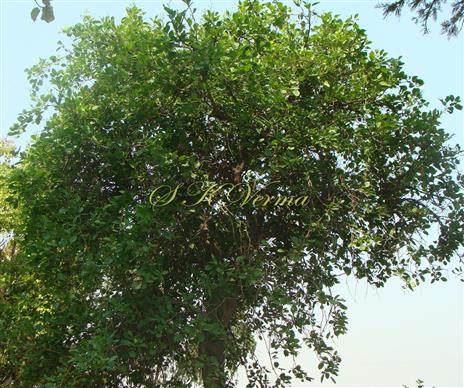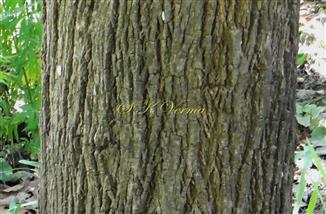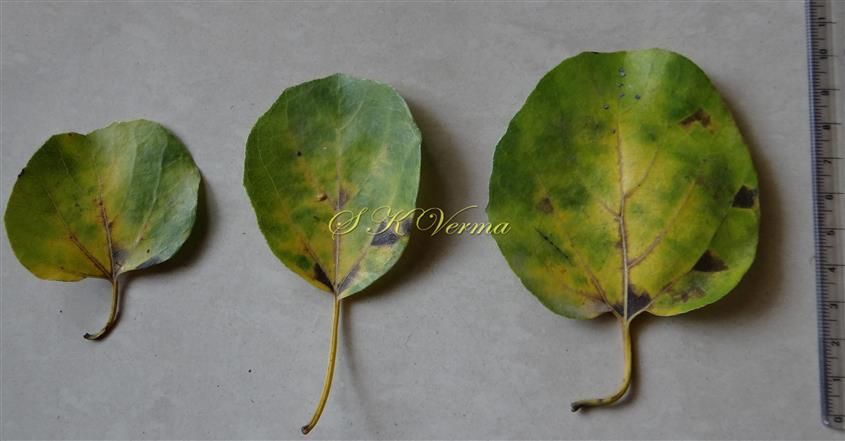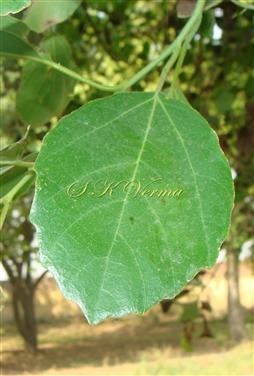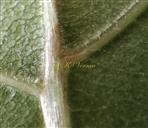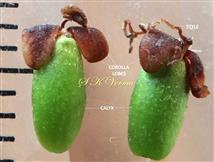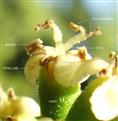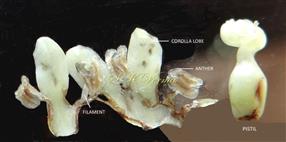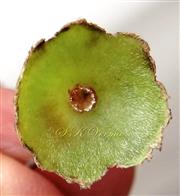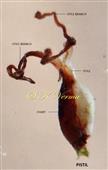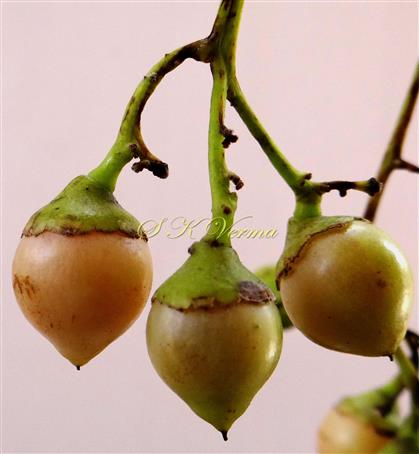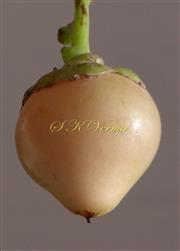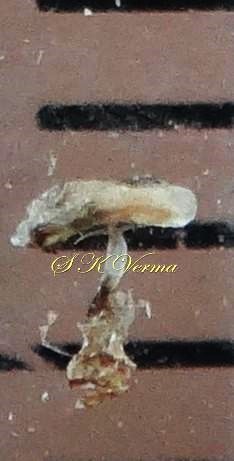CORDIA
Cordia
L., Sp. Pl. 191. 1753; Gen. Pl. ed. 5. 84. 1754; Brandis, For. Fl. N. W. & C. Ind. 336. 1874; Brandis, Indian Trees 478. 1908; Clarke in Hook. f., Fl. Brit. Ind. 4: 136. 1885; Parker, For. Fl. Punj. ed. 1: 356. 1918 (Reprint 1973); Fl. China @ eFloras.org 16: 331; Nasir, Fl. Pak. @ eFloras.org p. 5
Trees or shrubs. Leaves exstipulate, alternate, rarely opposite or subopposite, usually petiolate, margin entire or serrate. Flowers polygamous (male and bisexual), usually white or yellow, in cymes, spikes, racemes or heads. Calyx campanulate, tubular or obconical, smooth or ribbed, teeth 3-5, short, often irregular or obscure, enlarged after anthesis, persistent. Corolla white, yellow or orange-red, campanulate to funnelform, 4-5 (-8)-lobed, lobes anatrorse (curved or pointed forward or upward) or recurved. Stamens as many as and alternating with the corolla lobes, usually well-developed; filaments often pubescent at base; anthers subexserted. Carpels 2, syncarpous; ovary 4-loculed, glabrous, 1 ovule per locule; style terminal, doubly bipartite, each branch with a spatulate or capitate stigma. Fruit 1-seeded drupe (through abortion), drupes ovoid, globose or ellipsoidal, frequently with watery or sticky fleshy mesocarp and bony endocarp, rarely with corky mesocarp or nut-like without fleshy mesocarp.
225 species
Cordia myxa
Cordia myxa
L., Sp. Pl. 199. 1753; Wight, Icon. 2: t. 169. 1841; DC., Prodr. 9: 479. 1845; Brandis, For. Fl. N. W. & C. Ind. 366. 1874; Cooke, Fl. Bomb. Pres. (Reprint ed.) 2: 265. 1967; Parker, For. Fl. Punj. ed. 1: 356. 1918 (Reprint 1973); Fl. China @ eFloras.org 16: 331; Nasir, Fl. Pak. @ eFloras.org p. 8; C. obliqua Willd., Photographia 4. 1794.
Medium-sized deciduous tree; bark with shallow longitudinal fissures. Branches glabrous or brown-tomentose when young. Leaves alternate, simple; petiole 1.7-4 cm long with adaxial furrows; leaf blade 6-12.5 cm x 4-7.5 cm, orbicular, broadly ovate, ovate- elliptic or obovate, obtuse or rounded, base rounded or cuneate, margin subentire or more or less sinuate- dentate, adaxial surface glabrous, abaxially pubescent especially in the axil of nerves, basal nerves 3, rarely 5. Flowers 5-10 mm across, white, polygamous (male and bisexual), actinomorphic, hypogynous, in large, lax, terminal and axillary, pedunculate cymes; peduncle 2.5-5 cm long; pedicels short; buds pyriform. Calyx campanulate, tubular or obconical, smooth, ca. 5 mm long, glabrous without, pubescent within, 4-5-lobed, lobes recurved, splitting irregularly on the opening of flower. Corolla tube as long as calyx; lobes 5, as long as the tube, oblong, obtuse, recurved. Stamens 5, alternating with corolla lobes; anthers ca. 1.5 mm x 1 mm, oblong; filaments ca. 1 mm long, pubescent at base. Carpels 2, syncarpous; ovary superior, 4-locular, 1 ovule per locule; style terminal, elongate, double bipartite; stigmas capitate or clavate. Drupe ovoid, 1.2-2.5 cm long, apiculate, yellowish-brown, base partly surrounded by enlarged +/- broadly cupulate calyx, mesocarp pulp viscid, transparent, sweetish, edible and endocarp bony.
Common Names: Lasura
